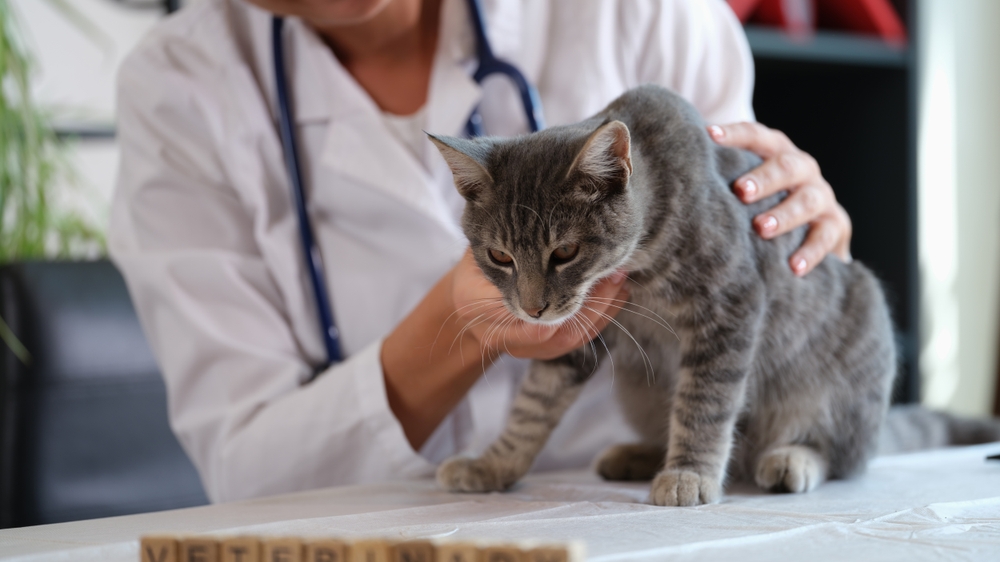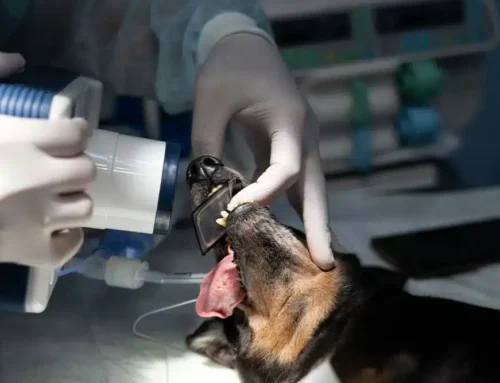In addition to the viruses that cause upper respiratory illness in cats, two other viral infections, feline leukemia virus (FeLV) and feline immunodeficiency virus (FIV), significantly threaten cats worldwide. To better protect their feline friends, all cat owners should understand how these viruses spread and affect cats. Join our Peak Pet Urgent Care team as we highlight the differences between these two viruses and explain what cat owners need to know.
What is feline leukemia virus?
One of the most common infectious diseases in cats worldwide, feline leukemia virus is a retrovirus that primarily affects domestic cats, as well as other felids. FeLV attacks the immune system, leaving cats vulnerable to various secondary infections, anemia, and certain cancers.
Feline leukemia transmission
FeLV is present in bodily fluids such as saliva, nasal secretions, urine, feces, and milk and is primarily spread through close contact with infected cats. Kittens can contract FeLV from their infected mother during pregnancy or through nursing. Sharing food and water bowls, mutual grooming, and bite wounds also can facilitate transmission among cats. Outdoor cats, unneutered males, and cats in multi-cat households are at higher risk of exposure.
Feline leukemia signs
FeLV manifests in various ways that range from mild to severe. Some common signs include:
- Appetite loss
- Weight loss
- Lethargy
- Fever
- Enlarged lymph nodes
- Pale gums
- Respiratory infections
- Persistent diarrhea
- Anemia
- Jaundice
Since the leukemia virus attacks the immune system, a multitude of secondary infections can develop and cause a wide range of signs.
Feline leukemia diagnosis
FeLV is typically diagnosed through a combination of blood tests, including ELISA (enzyme-linked immunosorbent assay) and PCR (polymerase chain reaction) tests, which detect the presence of viral proteins or genetic material in the cat’s blood.
Feline leukemia treatment
Unfortunately, FeLV has no cure. Treatment mainly focuses on managing secondary infections and providing supportive care, such as antibiotics, antiviral drugs, nutritional support, and fluid therapy, to improve the cat’s quality of life. Regular veterinary visits are essential to monitor the cat’s condition and to promptly address any complications.
Feline leukemia prevention
Preventing FeLV infection involves several measures, including:
- Vaccination — Vaccinating cats against FeLV can significantly reduce their infection risk. Kittens should receive the initial vaccine series, followed by booster shots according to their primary care veterinarian’s recommendations.
- Indoor living — Keeping cats indoors minimizes their exposure to infected cats and reduces the likelihood of transmission.
- Testing — Testing new cats for FeLV before introducing them to a multi-cat household is crucial.
What is feline immunodeficiency virus?
Feline immunodeficiency virus (FIV) is another retrovirus that affects domestic cats worldwide. Like FeLV, FIV compromises the immune system, making cats susceptible to various infections and diseases.
Feline immunodeficiency virus transmission
FIV is primarily spread through bite wounds inflicted during fights between infected and uninfected cats. The virus can also be transmitted from an infected mother to her kittens during pregnancy, birth, or nursing.
Feline immunodeficiency virus signs
FIV-infected cats may have no signs for years after contracting the virus, but as the disease progresses, they may experience:
- Recurrent infections
- Gingivitis and dental problems
- Weight loss
- Poor coat condition
- Lethargy
- Enlarged lymph nodes
- Chronic diarrhea
- Neurological issues
Feline immunodeficiency virus diagnosis
Diagnosing FIV typically involves blood tests that detect the presence of viral antibodies. However, false positives can occur, especially in kittens born to infected mothers, who may carry maternal antibodies but are not infected. Tests such as Western blot or PCR may be necessary to confirm the diagnosis.
Feline immunodeficiency virus treatment
Similar to FeLV, FIV has no cure. Treatment focuses on managing signs and preventing secondary infections and complications through antibiotics, antiviral drugs, nutritional support, and dental care. Regular veterinary check-ups are essential to monitor the cat’s condition and address any complications.
Feline immunodeficiency virus prevention
Preventing FIV infection involves similar measures as FeLV. However, no commercial vaccination for FIV is available, so other preventive measures (i.e., testing before introducing cats, maintaining a harmonious household) are critical for avoiding transmission.
Feline leukemia virus and feline immunodeficiency virus are serious infectious diseases that significantly threaten the health and well-being of cats, but you can help protect your feline friend from these potentially devastating illnesses by implementing preventive strategies and seeking timely veterinary care. Remember, your primary care veterinarian is your best ally in ensuring the health and happiness of your cat, but our Peak Pet Urgent Care team is always here for you and your whiskered pal if acute health concerns arise.







Leave A Comment